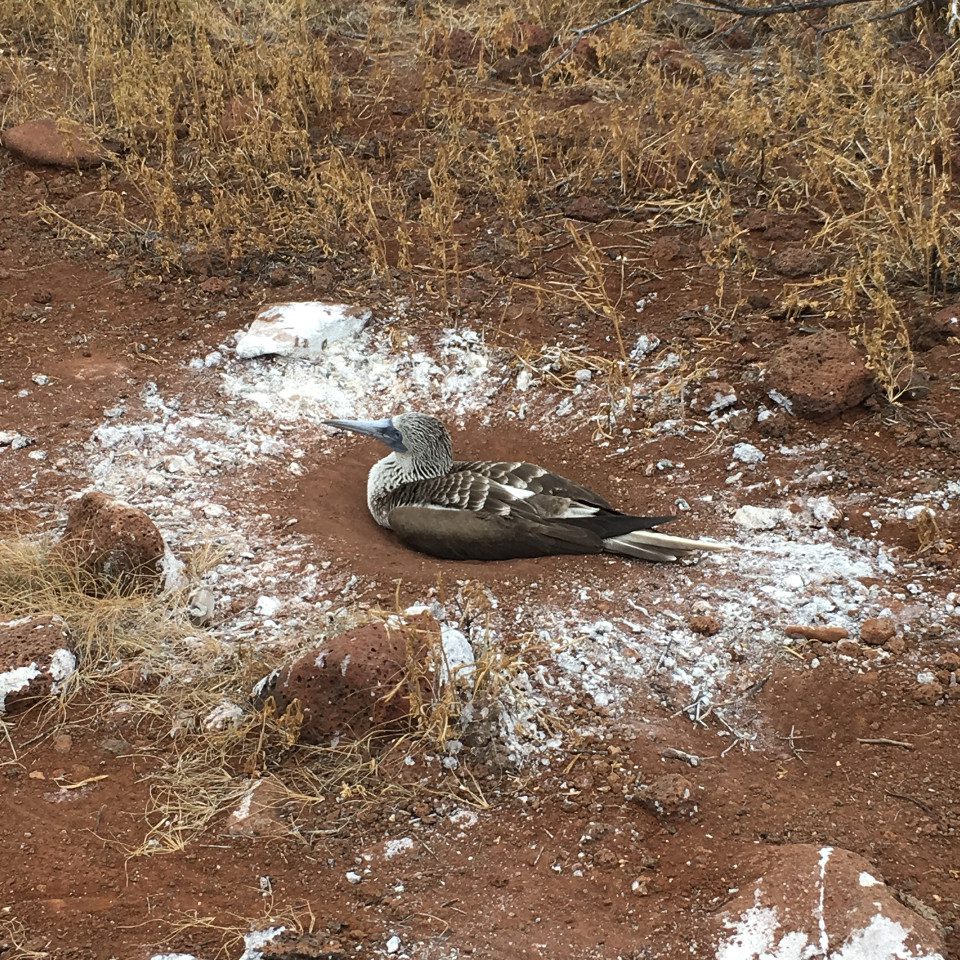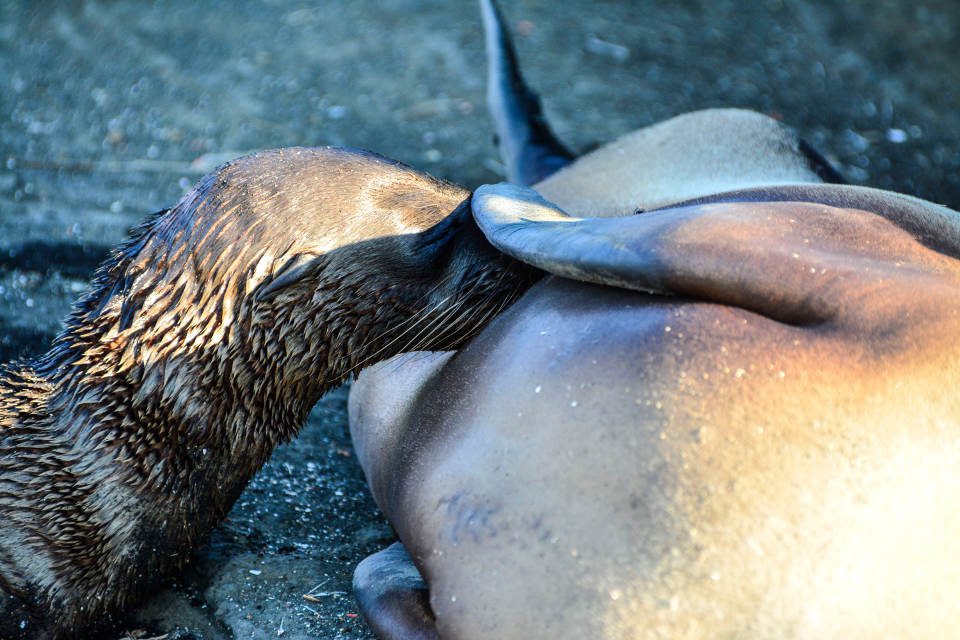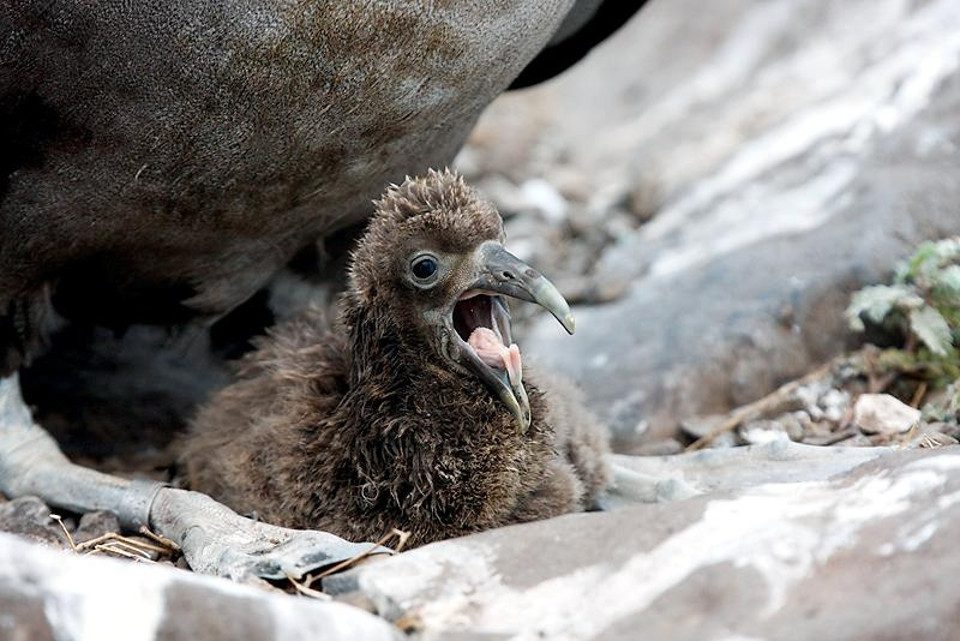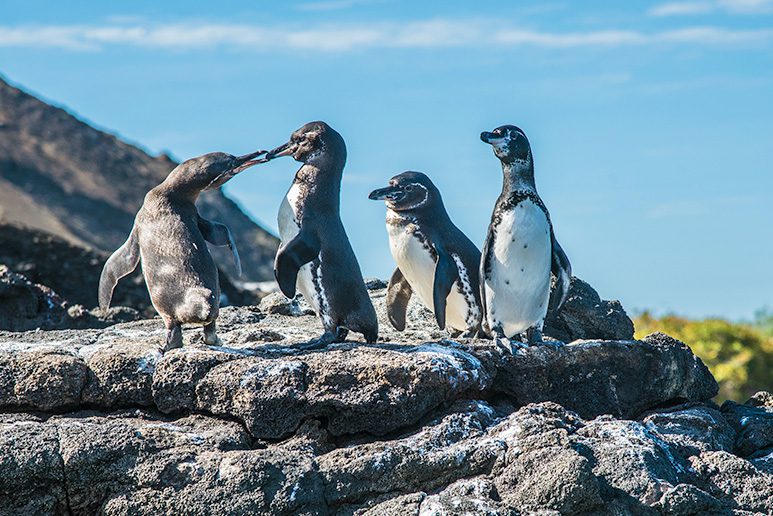The Galapagos Islands offer several unique moments in which you can experience first-hand the laws of nature. This time, we examine a handful of the extraordinary ways in which animal mothers in Galapagos care for their young.
Come along with us in this blog as we pull out our binoculars, tip our hats to them, and examine the fascinating ways in which these BIG15 iconic creatures take care of their offspring!
Make sure you can check out most of the Galapagos iconic species with Yacht La Pinta!
Blue-footed Booby

There are all sorts of nests in the animal kingdom, but not many are marked by bird poop (as weird as that may sound at first), but such is the case with the Galapagos blue-footed booby! Because this bird species choose not to build its nest on top of trees and branches – which birds usually do – it must instead find a way to mark its territory while still being able to recognize its young. It might be due to the lack of tall trees growing along the archipelago’s coastline, but the blue-footed booby always opts for a flat piece of terrain on which to lay its eggs., and this is where the interesting part comes in! Because blue-footed boobies don’t have a good sense of smell, they resort to their eyesight instead. Once the adult blue-footed booby finds a proper place on which to “build” (more like draw) its nest, it stands on that spot all day turning on its own axis and pooping as it pivots. The white guano creates an almost perfect circumference that marks the nest’s territory. The future eggs will eventually hatch within the “guano ring,” making it possible for parents to identify their respective “nest” and hatchlings whenever they come back from hunting for food.
TALK TO A DESTINATION EXPERT

Diego Zapata

Rosa Mena

Sandy Lara

Diego Zapata

Rosa Mena

Sandy Lara
Fur Seal
A little harder to spot than their less furry cousins, Galapagos fur seals are known to be late bloomers. It’s towards the end of the month of September that female Galapagos fur seals start giving birth to cute and fuzzy fur seal pups. It’s during this time – when temperatures are still cool, and waters have a higher amount of nutrients – that fur seal pups come into the world during a time when there is more food for their mothers. Unlike others from their same species that nurse for weeks or months, these animal mothers in Galapagos have been seen nursing anywhere between one and two years, sometimes even longer! They have the longest nursing period of any pinniped! If you want to see these tenacious mothers and their pups, make sure to visit the islands of Isabela, Fernandina, or Santiago. You’ll find them on the rocky coastlines, hanging out under the shade!
Sea Lion

Not long after the first week of having given birth, sea lion mothers will diverge from spending their time on the beach nursing their newborn pups and head out into open water. Why the sudden shift and neglect? Well, they need to search for food to help sustain their bodies as well as their newborns! Sea lion mothers will simply leave their newborns on the shore and, once they’ve returned, use their unique bark to get the attention of their respective pups. Their newborns will often time respond quickly to the sound of their mother, yet the mother will double-check and smell the newborn in order to confirm that it’s actually hers and that it hasn’t been touched by any foreign animals (such as humans).
Given that they oscillate between pup and ocean rather frequently, mother sea lions have devised a fascinating and near-communal way of looking after their young: sea lion pup nurseries! That’s right, sea lion mothers will often choose to leave their pups in tidal lagoons that are free from predators when they go out fishing! This means that pups are free to play around with other pups while the mothers are out hunting!
Sure enough, one might say that this is a rather laissez-faire form of animal mothers in Galapagos caring for their young, especially given the fact that they usually leave their pups to their own devices. But in a place as paradisaical as Galapagos, where many species are in heaven with the absence of apex predators, it makes perfect sense!
If you’re lucky enough, you might even get to see mother sea lions giving birth or defending their young against airborne threats!
Waved Albatross

It just so happens that numerous waved albatrosses – one of the largest birds in all Galapagos – are currently in the process of becoming mothers! That’s right! It’s during this time of year that they’re highly busy stretching their beaks out and getting their courtship on! And what’s more? The mothers of these elegant and gargantuan birds aren’t alone in their endeavor to raise their newborns: albatross fathers jump in to lend a hand, too. Both parents will work in tandem as a “tag-team” of sorts, with one parent heading out to find food while the other keeps the newborn safe and warm.
Galapagos Penguin

It’s a known fact that penguins mate for life. A little less known fact is that they also build the nest and incubate together, sharing duties and taking turns. Even though this month we are celebrating mothers in particular, both Mother and Father’s Day celebrate the same thing: the instinctive love and care that parents have for their young (in most species). So, on this special day, why not acknowledge both parents of this incredibly rare species!
Galapagos penguins build their nests along the rocky shores, usually protected from the sunlight. When the time comes, the female lays one or two eggs that are incubated for up to 40 days by both parents! Once they hatch, they take turns looking after the babies while one parent heads out in search of food. Talk about teamwork!

Javier Garcia

Eduardo Silva

Carolina Escobar
START PLANNING YOUR TRIP

Javier Garcia

Eduardo Silva

Carolina Escobar
Get in touch for more
CONTACT US
Frigatebird (Great & Magnificent)
Up to a whopping one and a half years is how long it will take until mother frigatebirds leave their babies to their own devices. This makes them contenders for having one of the longest periods of post-fledging of any bird. Why the long wait? This is how long it takes for newborns to grow their adult plumage and finally venture out into the wild independently! Similar to the way the waved albatrosses behave, frigatebirds in Galapagos will take on the task of raising their young jointly – both mother and father participate in raising their young throughout this entire period.
Animal Mothers in Galapagos: Happy Mother’s Day!
And that’s it, folks! Now you know a little about some extraordinary ways in which animal mothers in Galapagos take care of their young. On behalf of Yacht La Pinta, we want to wish all the caring mothers out there a Happy Mother’s Day!


